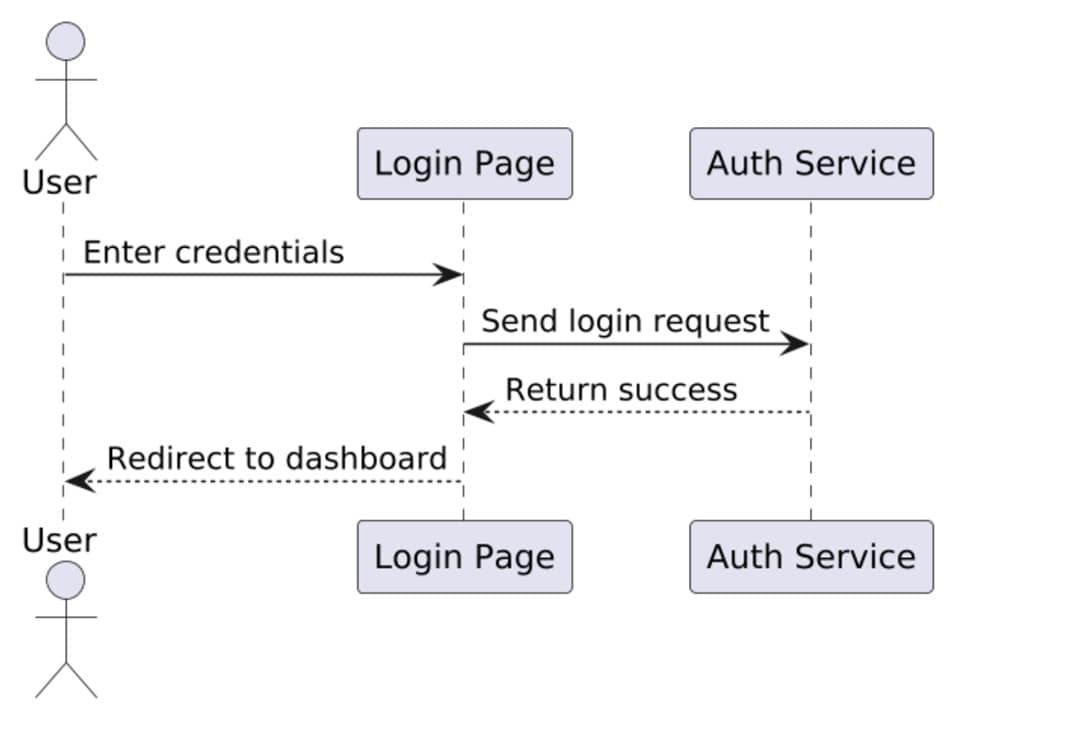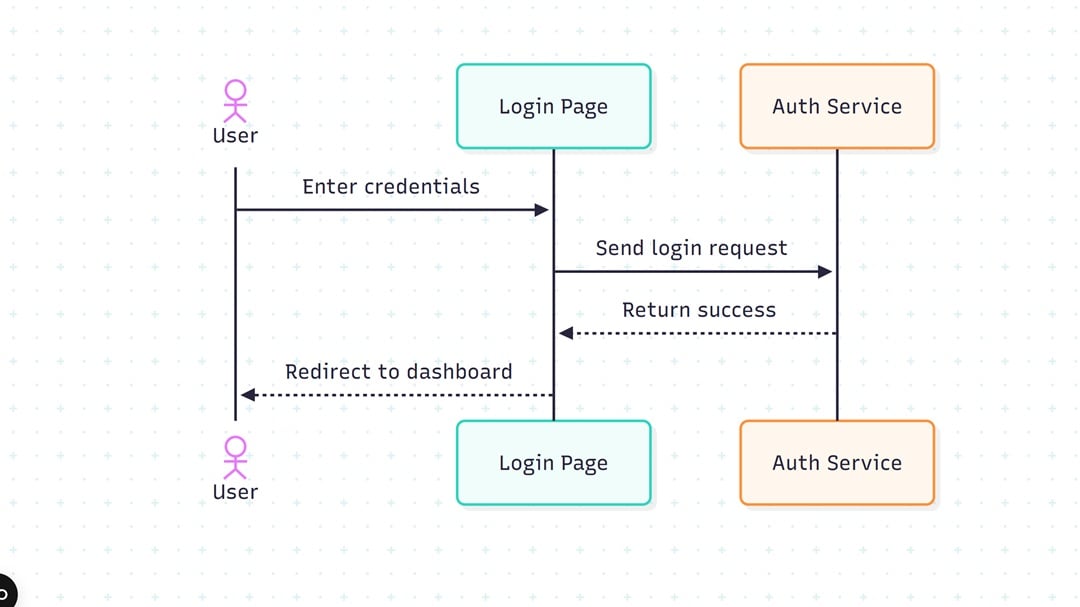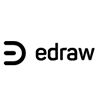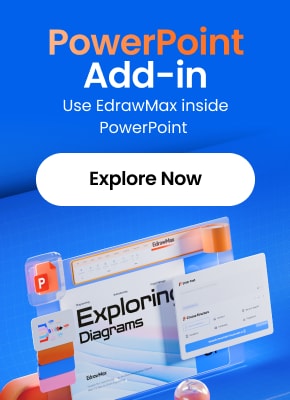When I first needed a tool to make diagrams with text, I kept hearing two names: PlantUML and Mermaid. Both seemed popular, and many developers had strong views on which one was better. I decided to give them a try myself. That's when I understood they aim to fix the same issue—creating diagrams from code—but in different ways.
People often compare PlantUML vs Mermaid because both tools support similar UML diagrams. If you're working on system design or technical writing, you'll search for the best UML diagram tool. And you'll come across these two options.
This comparison is for people who need clean, easy-to-share diagrams without going for drag-and-drop tools. If you're a developer, student, or technical writer aiming to create visuals right in your markdown or codebase, this guide will come in handy. I'll tell you what I found good, what gave me trouble, and which tool might suit your work style best.
Let's get into it!
In this article
Core Purpose and Philosophy
PlantUML focuses on structure. It aims to create formal UML diagrams such as class, sequence, and activity diagrams. Users who stick to strict modeling rules and value accuracy use it. The syntax feels rigid, but it stays clear and reliable.
Mermaid follows a unique approach. It focuses on being fast and easy to use. You can create flowcharts, diagrams, and user maps without much effort. It fits into markdown documents and connects with tools such as GitHub and Obsidian.
Software architects and teams dealing with intricate systems often choose PlantUML. Mermaid works better to create quick visuals in team wikis or documentation. If formal modeling matters to you, PlantUML could be a good choice. For making simple and fast diagrams that are easy to read in your notes, Mermaid provides a more lightweight option.
Syntax Comparison With Examples
One major difference between PlantUML and Mermaid lies in their syntax. The methods these tools use to create class diagrams, flowcharts, and sequence diagrams influence how simple they are to write, understand, and share with others. We'll look into some examples to learn how syntax affects ease of use and collaboration.
Class Diagram
PlantUML Code
@startuml
class User {
+name: String
+email: String
+login(): boolean
}
class Admin {
+adminLevel: int
+banUser(user: User): void
}
User <|-- Admin
@enduml
Mermaid Code
classDiagram
class User {
+String name
+String email
+boolean login()
}
class Admin {
+int adminLevel
+void banUser(User)
}
User <|-- Admin
PlantUML uses a structured class diagram format aligned with traditional UML standards. It defines classes, attributes, and methods using clear tags and brackets. Mermaid presents a simpler approach. It adopts a more straightforward format and avoids unnecessary symbols. Both display inheritance and class specifics. However, PlantUML focuses on being formal, while Mermaid focuses on making things easier to write.
Flowchart Diagram
PlantUML Code
@startuml start :User logs in; if (Login successful?) then (yes) :Show dashboard; else (no) :Display error; endif stop @enduml
Mermaid Code
flowchart TD
A[User logs in] --> B{Login successful?}
B -- Yes --> C[Show dashboard]
B -- No --> D[Display error]
PlantUML creates flowcharts by following step-by-step commands. It relies on if-else blocks to make decisions. Mermaid works by focusing on visuals with arrows and labeled nodes. Using PlantUML feels like writing out logical instructions, while Mermaid feels more like drawing or sketching ideas.
Sequence Diagram
PlantUML Code
@startuml actor User participant "Login Page" as LP participant "Auth Service" as AS User -> LP: Enter credentials LP -> AS: Send login request AS --> LP: Return success LP --> User: Redirect to dashboard @enduml
Mermaid Code
sequenceDiagram actor User participant LP as Login Page participant AS as Auth Service User ->> LP: Enter credentials LP ->> AS: Send login request AS -->> LP: Return success LP -->> User: Redirect to dashboard
You see a formal design that shows roles and message flow in PlantUML. Mermaid, on the other hand, uses a lighter approach with shorter arrows and simpler labels. Both tools rely on actors and participants. Mermaid's simpler syntax allows users to read it faster, which makes it handy to edit in markdown files or documents.
Rendering and Styling Capabilities
Before comparing output quality, we first need to look at two sequence diagrams. One uses the Mermaid diagram tool, while the other comes from a basic PlantUML tutorial. We'll check their appearance, the ease of styling them, and their consistency when displayed on different platforms. After that, I'll explain which tool provides better visuals.


You've seen the two results. Now, let's talk about the rendering and styling capabilities of both tools:
Visual Output Quality
Mermaid displays cleaner layouts with modern fonts and smoother arrows that have rounded edges. It appears more suited to web use and feels appealing. PlantUML uses sharper corners, older-style fonts, and simpler shapes. It gives a more technical vibe but lacks a polished finish right away.
Styling Support
Mermaid includes ready-made themes that let you adjust colors and style labels. It makes changing the look simpler, especially when using markdown tools. PlantUML provides more control through options like skinparams and layout adjustments. However, it feels less user-friendly and more hands-on. It can be harder for beginners to work with.
Render Consistency
Mermaid diagrams can look a bit different depending on the editor or when viewed in live previews or markdown tools. PlantUML tends to produce steadier results if the same rendering engine is used in different tools. It relies on a Java backend, which helps keep its output reliable.
My Verdict
I tested both tools and noticed that Mermaid creates diagrams that look nicer without needing much work. The fonts appear sharper, the layout looks more even, and the preset colors make the diagram simpler to understand.
On the other hand, using PlantUML required more effort. I had to fix the spacing and style to make it look good. It functions well and stays reliable across different platforms, but the default output feels more practical than polished.
Limitations and Pain Points
Both tools include handy features and simple syntax, but neither is flawless. After using them, I noticed some drawbacks that might delay progress or change the result.
Rendering issues
Mermaid struggles to position arrows or labels in detailed diagrams. The layout might change across various editors or rendering tools. PlantUML keeps things steady but has an old-fashioned appearance unless you tweak its styling.
Syntax Struggles
Mermaid syntax feels easy to learn, but tiny mistakes can ruin the entire diagram. PlantUML, on the other hand, uses a stricter and more complex syntax, making it tougher to write or recall without assistance.
Challenging Diagrams
Mermaid fails to manage big class diagrams or multi-layered flows well, often resulting in clumsy layouts. PlantUML can take on these tasks, but users need to spend time adjusting things so they look clear.
Where it Breaks Down
Big diagrams make both tools harder to work with. Mermaid turns messy, and PlantUML gets tricky to troubleshoot. Building a full system architecture with both tools takes a lot of work.
Want to Skip the Code Altogether? Try EdrawMax

After trying out PlantUML and Mermaid, I noticed many people don't want to deal with complicated syntax just to make a basic diagram. Building some diagrams can take forever, with small mistakes ruining everything. To create diagrams without coding, you can check out a smarter choice—EdrawMax.
EdrawMax helps users create class diagrams, flowcharts, and sequence diagrams by placing shapes on a canvas. The tool provides automatic spacing adjustments, grid alignment, and includes many UML-specific symbols. Users can change themes, modify connectors, and save diagrams in various formats. You can save your work in Visio, PDF, or HTML, all within a simple and organized interface.
Why You Will Love It
- AI Diagram Generator: Create diagrams by typing a simple text prompt.
- Templates Library: Pick from a wide range of pre-made templates like UML, flowcharts, or network diagrams.
- One-click Export Options: Save diagrams as PDF, PNG, SVG, or even PowerPoint slides that you can edit later.
- Drag-and-Drop Interface: Design diagrams with shapes, connectors, and tools that help with alignment.
- Offline and Online Access: Use EdrawMax on your browser or download it to work offline at any time.
Final Tool Picker Table
| Feature | PlantUML | Mermaid | EdrawMax |
|---|---|---|---|
| Ease of Use | Moderate – needs syntax knowledge | Easy, simple, and readable syntax | Very Easy – drag and drop interface |
| Styling & Themes | Manual with skinparams | Built-in themes available | Full visual control with themes |
| Rendering Consistency | High with Java backend | Varies across platforms | Consistent across web and desktop |
| Best For | Formal diagrams and system modeling | Quick diagrams in docs or wikis | Visual users who prefer no coding |
Closing Thoughts
Using code to create diagrams helps you save time, but only when the tool works and doesn't cause delays. PlantUML provides structure yet demands extra effort to correct syntax errors. Mermaid works faster, but it tends to fall apart when dealing with larger diagrams.
After comparing PlantUML vs Mermaid, I think both tools have their use, though they aren't always the quickest. Anyone using code-based diagram tools understands the compromises involved—fast writing often means slow rendering, or the other way around. When the layout gets messed up, fixing arrows and spaces can be a real headache.
That's where EdrawMax Online changes the game. EdrawMax skips fancy tricks with design tools. It creates the diagram you picture in your mind. You just drag, drop, and it's finished. I've compared coding tools and visual editors, and the difference in speed and clarity speaks for itself.
Try them all. But go with the one that actually saves you time!







